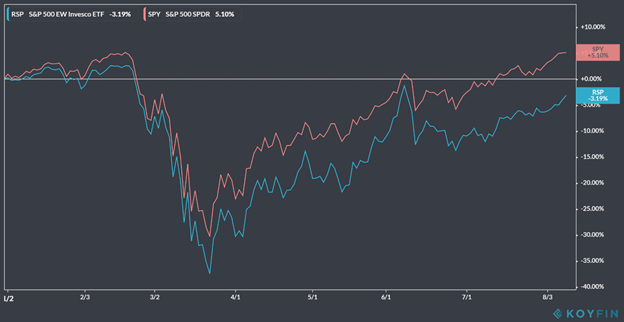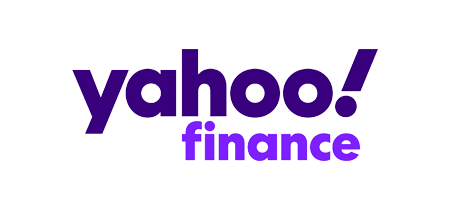01 Mar, 2023
How Model Portfolios Work in The Real World: Advisors' Advice Written by: Dinah Wisenberg Brin Model portfolios continue to gain ground with financial advisors, who can select from a growing number of models to help manage their clients’ investments. Almost $350 billion in assets sat in model portfolios as of March 2022, a 22% increase over the prior nine months, Morningstar reported in June. The research firm’s database covered more than 2,500 models as of November 2022, more than double the amount two years earlier. ThinkAdvisor recently asked advisors to tell us how model portfolios fit, or don’t fit, into their businesses. We asked: How and why do you use model portfolios in your business? Do you employ one family/one product group/one series with different asset allocations? Or a wide variety of them? What are the pros and cons of model portfolio use? Clearly, there’s no one answer or approach that covers all practitioners. Here’s what five advisors told us about their work with (or without) model portfolios. Erik Nero, founder and president, First Step Wealth Planning LLC: I use them for pretty much all of the implementation for the investment management for my clients. I say almost all simply because for client portfolios that need a little more customization specifically for non-IRA or retirement type accounts, I’m going to work on that a little more closely with the client to take a little bit more action between the client and myself to get that implemented. But for portfolios that are typically retirement-based and are for a longer-term time horizon, models work perfectly. They are scalable, they have the opportunity to leverage tremendous resources on behalf of whatever firm is offering them, and then the trading resources are second to none. So for small firms such as mine I’m able to leverage tools and resources that I ordinarily would not be able to gain access to with respect to the trading and implementation of these portfolios, and it gets done seamlessly. So it saves me time to help my clients on what really matters to them, which is how that money’s going to support their goals, dreams and aspirations, and I use a number of different types of providers. I’ve narrowed it down to three. There’s so many out there and at the end of the day it really comes down to asset allocation, and that’s going to drive the vast majority of the performance, and I like to have low-cost exchange-traded fund types of portfolios that are put in place. So I believe more passively but strategically indexing to the various aspects of the market so that my clients can participate rather than anticipate the market. The pros obviously are the scalability, access to the resources and the brain trusts of the firms that are putting them together so I can really leverage my time and resources. The cons are it may come down to one size fits all. I use a number of different types of allocations based upon time horizon and tummy tolerance that each client has, but it’s hard to use half sizes, if you will, with these types of portfolios. So it takes a little bit of creativity with respect to what types of models are going to be employed in which types of accounts to get to an allocation that’s going to be perfect for that client. Kyle Simmons, lead financial planner, Simmons Investment Management: I do use a model portfolio in my business. Many advisors outsource model portfolio creation to a TAMP (turnkey asset management program) or use one from a model marketplace provided by their custodian. I personally have my own model portfolio that I review monthly and make changes to maybe once or twice a year. Having a model portfolio allows me to actualize my investment philosophy and best investment ideas into a single cohesive portfolio and implement it across my entire client base. It’s important that advisors don’t get too attached to their model, as clients will come in with legacy holdings and you want to be able to make investment decisions with tax consequences in mind. For every incoming holding, I evaluate the cost basis and assign an equivalent holding in my model. Sometimes that legacy holding will be a highly appreciated individual stock that selling would have serious tax consequences. Other times the holding will be a low-cost ETF that’s equivalent to a position in my model and it could make sense to continue to hold that fund going forward. Another common deviation from the model is for clients with 401(k)s that have limited investment options. In these cases, advisors need to determine how they can implement their models within that limited subset of options. My model does tend to use ETFs from a single family (Vanguard), but it also contains funds from other families such as from iShares and SPDR. I think it’s important to be open to the best options for the sectors you want to target, but also understand that certain families tend to provide more value. The number one pro is the ability to implement your best ideas across an entire client base. For those that outsource, I’m sure they appreciate taking part of the investment management piece off their plate in terms of the amount of research that is needed to do a good job as a fiduciary. The con is simply the potential to be over-reliant on a model and selling client assets just to move them into it. If this happens, the client’s investments could be jerked around and result in significant taxes and trading costs, which reduce their overall performance. Jan Pevzner, principal, Gotham Block LLC: A model portfolio is a good starting point for a "generic" client. If you don't have an in-house investment management team, starting with a model portfolio will save you a lot of time. Once you have a model, you can customize it by adjusting the specific exposures built into the model to the household you are working with. Suppose your client is in tech and has a significant employer equity grant . It could be options, RSUs (restricted stock units) or other forms of equity. In that case, reducing the portfolio's allocation to technology might make sense to balance off the overall exposure. I work with several models from the same provider, Vanguard, which offers different series that each can be adjusted for a client's risk tolerance to produce a custom model. The model's choice depends on the portfolio's size, the degree of customization required, and the location of the assets. A simple model with fewer components is best for clients with simple portfolios. Other clients might need more complex allocations with finer control over the factors they are exposed to. For example, two separate ETFs for value and growth instead of single equity ETF will let you increase your exposure to value stocks. The pros are that they save time and allow you to deliver quality products to your clients. The cons are that those model portfolios are generic and inflexible and don't consider a specific client's financial situation. Jon Ulin, CEO of Ulin & Co. Wealth Management: For the past two decades, our independent advisory firm has provided clients with a fee-based, model-driven approach to asset management with a fiduciary focus. Our clients pay for and expect us to deliver management of their portfolios in addition to comprehensive planning, both not typically provided by advisors outsourcing management to Robo-advisors, back-office wirehouse offerings or third-party managers. Do you employ one family or series? It is prudent to research, screen and utilize investments across different companies as there are over 10,000 different mutual funds, ETFs and index funds across a vast array of asset classes, sectors, styles, countries and factors. In the active management space, it can be difficult to find companies where every manager in their provided line up meets or exceeds their benchmarks. ... In the passive index and ETF space, different firms may offer variations of various benchmarks, sectors or styles that may include unique strategies such as smart-beta, low-vol, equally weighted and socially responsible funds that may additionally involve a combination of human or quant overlays. Pros and cons of model portfolio use? Strategic model portfolios provide a structure for asset allocation and diversification like building a foundation for a house based on each individual clients' specific risk tolerances and financial goals to help minimize volatility and provide a smoother, more consistent ride over time. It is a more pragmatic, efficient and scalable tactic for advisors to utilize model portfolios with active and passive fund strategies for long-term investors rather than taking the time or having the know-how to research and trade individual securities while attempting to create customized portfolios for each client. Caveat emptor when investing on your own, or when partnering with an advisor utilizing robo-platforms, “back office” wirehouse model offerings or third-party model portfolio managers. Many of these programs have been incepted just over the past 5-10 years and may not have a long track record or really been tested through major crashes recessions like the dot-com or Great Recession crash. At the same time, many of these new programs may provide a better approach than doing it yourself or in some cases, a less experienced advisor. Nate Creviston, Manager, Wealth Management and Portfolio Analysis, Capital Advisors Ltd.: We do not use model portfolios so hopefully this can offer some insight to the other side of the question. We believe that each client deserves a completely customized portfolio that is unique to their needs, goals, risk tolerance and risk capacity. A limitation to this practice is that this is a much more time-intensive portfolio management style as we can’t complete large block trades, or have the portfolio managed by a robo-advisor, but we believe that the client deserves a unique portfolio. A downside to the model portfolio is the lack of tax awareness. Over the past couple of years we were able to tactically tax-loss harvest in our accounts without initiating large block trades that might adversely affect a subsection of our client base. For example, if you have two clients who own the same stock, but one bought it at $50 and the other bought it at $100, and the stock is currently trading at $75, then the same tax loss harvesting trade cannot be done in both accounts. In most model portfolios, you would need to decide whether to execute the trade for both clients or for neither client; typically, these choices are mutually exclusive. It often occurs where you have a client with a large real estate portfolio outside of their investment accounts for example. We believe that needs to be taken into consideration when constructing that client's portfolio. In a model portfolio, you still might allocate 2%-5% into REITs due to their risk tolerance and time horizon without considering the overexposure to real estate both the private and public sector. In that circumstance, we would tactically under allocate their real estate exposure in their investment accounts.













